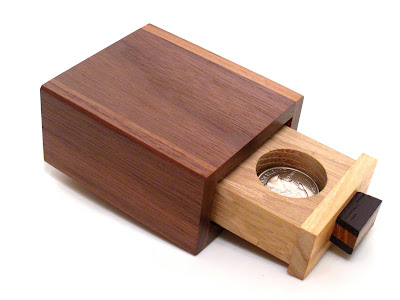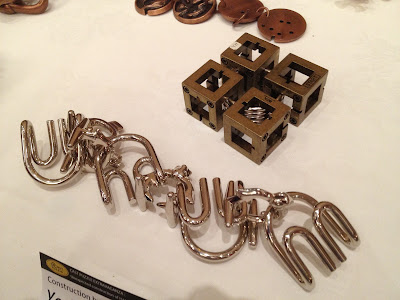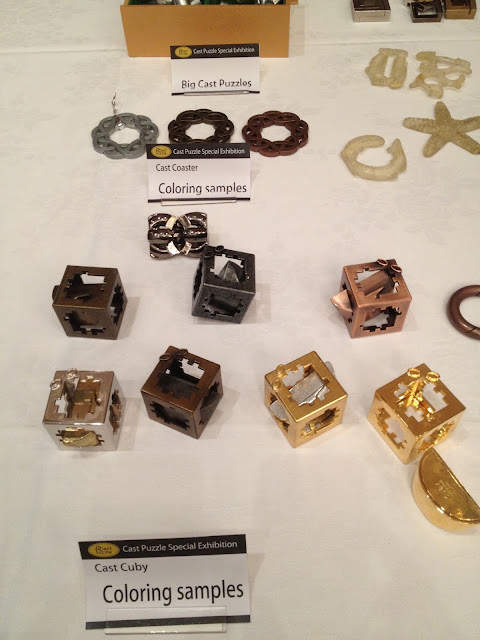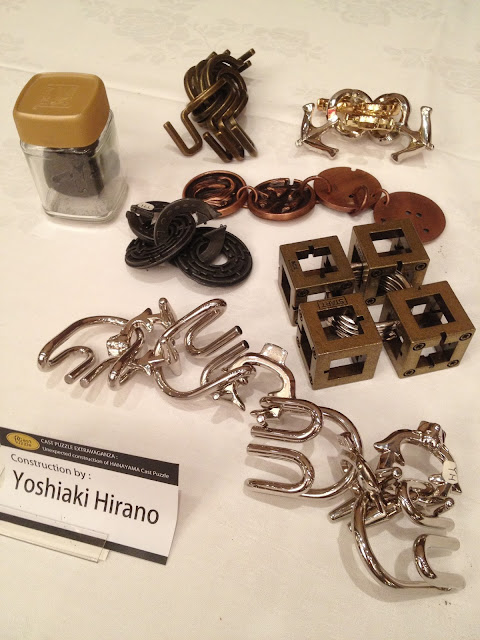Peppermint
Designer
Scott Elliot. Scott also runs his own 3D printing/puzzle blog.
Scott Elliot. PM Scott via his blog for availability of the Peppermint. He may still have copies left over from IPP33.
Take apart; disentanglement
Dimensions
6cm (Diameter) x 4.5cm (Thickness). Nice good size for the hands.
Materials & Construction
ABS resin. Construction, fit and finish is very good and all the parts are manufactured to pretty tight tolerances. The surface of the puzzle does have some texture and this aids in the gripping. Although plastic looking, the pieces are surprisingly solid and can take abuse.
IPP
The Peppermint was Scott's exhange puzzle at IPP33 held in Tokyo, Japan at the beginning of this August.
Overview
Scott had blogged about the preparation of his Peppermint as an IPP33 exchange puzzle at the beginning of this year. It looked rather interesting and when IPP33 came around, I emailed Scott to say I wanted a copy of both his Peppermint as well as his Moire Maze puzzle. He kindly reserved one of each during the Puzzle Party for me before they were all sold out. He also had one or two other puzzles on sale and I bought his Puckup puzzle as well. (see below).
The Peppermint has two tone colours of red and white and at first glance, it appears to be like a white ball surrounded by a thick red ring. The puzzle consist of four "interlocked" (or rather intertwined) pieces and the object is to separate them (without the need for any force). I have been told that the Peppermint bears some similarity to Hanayama's Cast Marble but as I have never played with the latter, I can't really compare the Peppermint against the Cast Marble.
Although it consist of only four pieces, the Peppermint is no walk in the park. It took me a good half hour of fiddling and twisting before I managed to separate the pieces. Re-assembly is a whole different ball game! As of this blog post, I have still not succeeded in getting the pieces back together. I have emailed Scott for some help and waiting to hear from him.
Difficulty Level
Fairly challenging to take apart (without the right technique, which I am sure there is one) but much much more difficult it seems to put back together; again there must be some technique to be applied. His Puckup puzzle (below) is a simpler 2-piece put-together puzzle that is also dimensionally smaller (4.0cm in diameter). This one is made of nylon and came separated. The object is to join the two pieces. May be quite tricky for the inexperienced puzzler but I got the pieces to form a disc in a jiffy.
Summary
I felt the Peppermint's a bit different from the usual genre of mechanical puzzles. Tough and (almost) unbreakable; worth acquiring in my opinion. Throw in the Puckup while you are at it as well.




























































